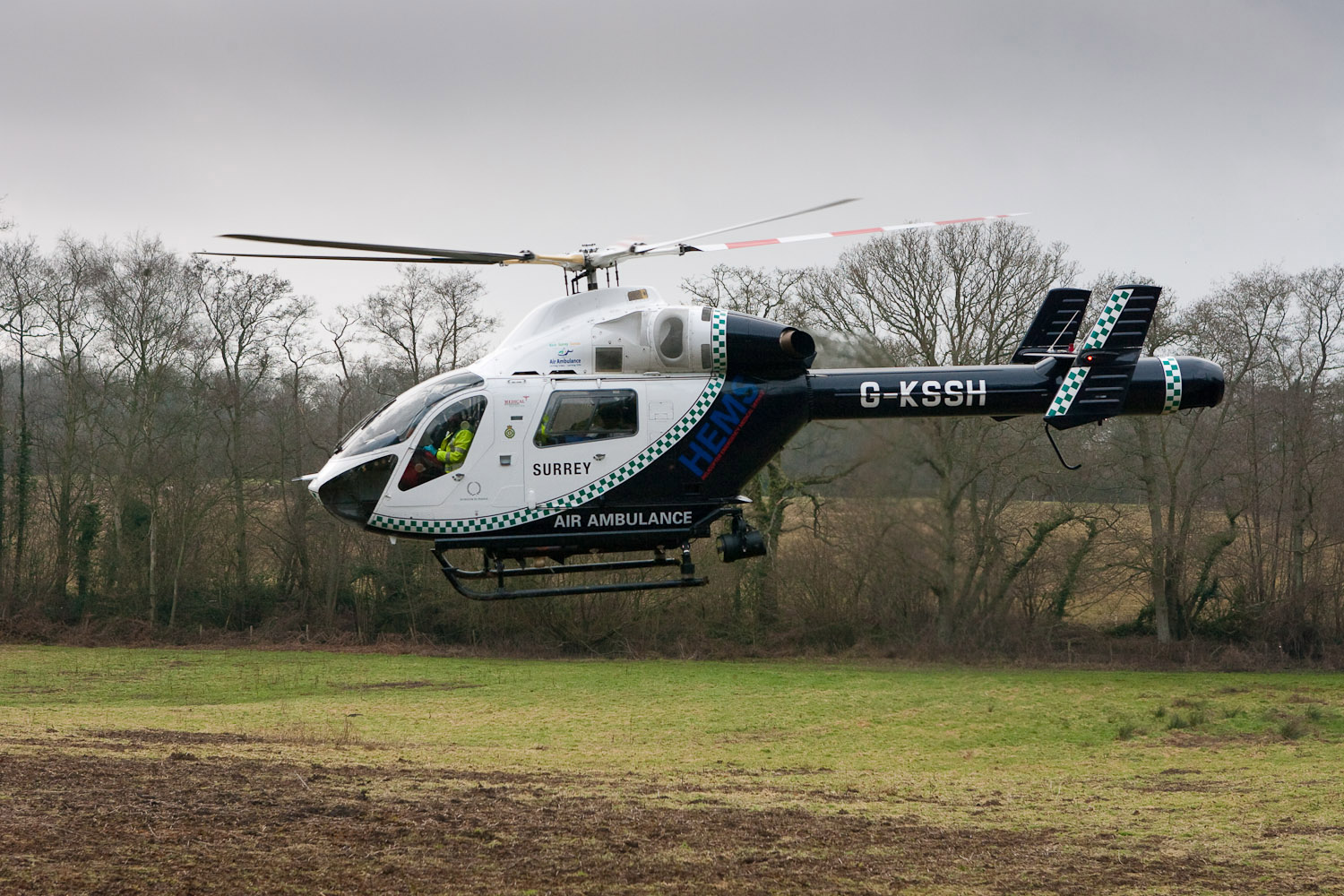We’ve just been sent this by the Sussex Air Ambulance and reckon it’s worth passing on as a reminder that we all, hopefully, won’t need the Air Ambulance service, but that it shouldn’t stop us from putting money in the moneybox for them.
A mountain bike rider was airlifted to hospital by the Sussex Air Ambulance after crashing during a race at the weekend. Bruce English was competing in a Cyclocross event in the grounds of Walstead School near Lindfield when the accident happened on Sunday.
The Lewes Wanderers cyclist, in his 40s, came off his bike in woods half a mile from the nearest road. The Sussex Air Ambulance was called due to the remote location and landed in a nearby field. Mr English suffered facial and arm injuries and was flown to the East Surrey Hospital at Redhill.

It took the Dunsfold-based Sussex Air Ambulance crew 15 minutes to get to Mr English and a further 15 minutes to reach the hospital. Paramedics from the South East Coast Ambulance Service were also called to the scene of the accident at about 2pm.



Pictures of the dramatic air rescue were taken by fellow cyclist Mike Anton with Mr English’s permission.
He praised the Air Ambulance crew after being told it costs about £4,657 a day to run the life-saving service.
He said: “That’s a lot of money so hats off to all concerned for keeping the operation going.
“It was a nasty crash but fortunately it looks like Bruce isn’t too bashed up.”
Photos: Mike Anton
Sussex Air Ambulance Crew: Captain Steve Wood – Pilot, Nigel Raghunath – HEMS Doctor, Gordon Clark and Jon Sanders – HEMS Paramedics.







someone tell the government that in line with the rest of Europe our air ambulances shouldn’t be a charity and should be state funded !!!
Anyone know why Air Ambulances are charity funded? They must be a really effective way of saving lives and should receive NHS funding.
eh ? You want the government involved ? What possible value can they add. There’ll be targets and quangos and all sorts of useless interference.
These boys do a great job, and I hope you pay a bit towards them. Just like the RNLI – keep the government well away.
Why do they cost so much to run?
Albeit 10 years ago, I remember getting a tourist helicopter ride over the Gand Canyon for 100 dollars.
Can you imagine the sort of under funded heap of crap they’d have to fly if it was state funded? I doubt it would even leave the ground. Same with the RNLI, they’d have an orange rowing boat and some matching wellies.
Mandog – running some chopper for tourists is slightly different to running what could be classed as a mobile A&E unit… the kit alone to keep someone alive must cost loads to buy and keep in good working order. Then you’ve got people always on call to fly. Keeping pilots flying to keep their hours above the threshold even when thankfully there isn’t any callouts..
I’ll answer my own question… it seams the analysis shows that land based ambulances are more cost effective and therefore are state funded. Health outcomes are largely the same for air and land based services and hence UK air ambulances are mainly charity funded. However Scotland has two government funded helicopters. Donors take a ‘hands off’ approach. Air ambulances are mostly leased from specialist operators who are responsible for pilots and maintenance.
Also Air Ambulances as a charity means they can make decisions as to what is best for the service rather than being controlled by government pen pushers.